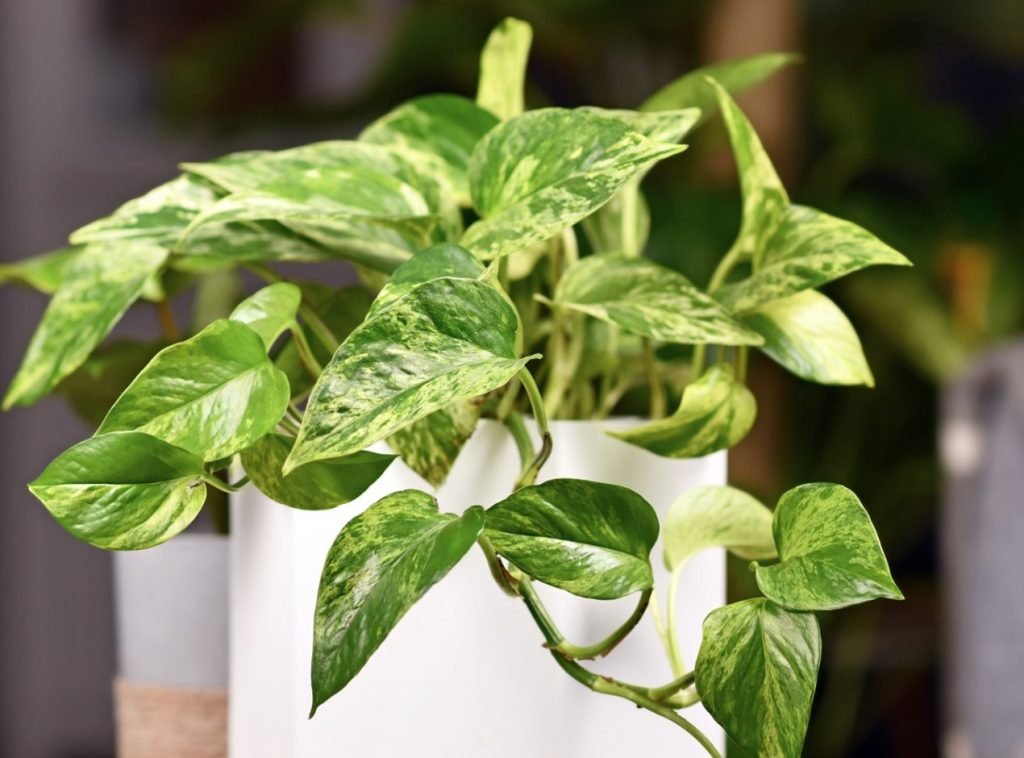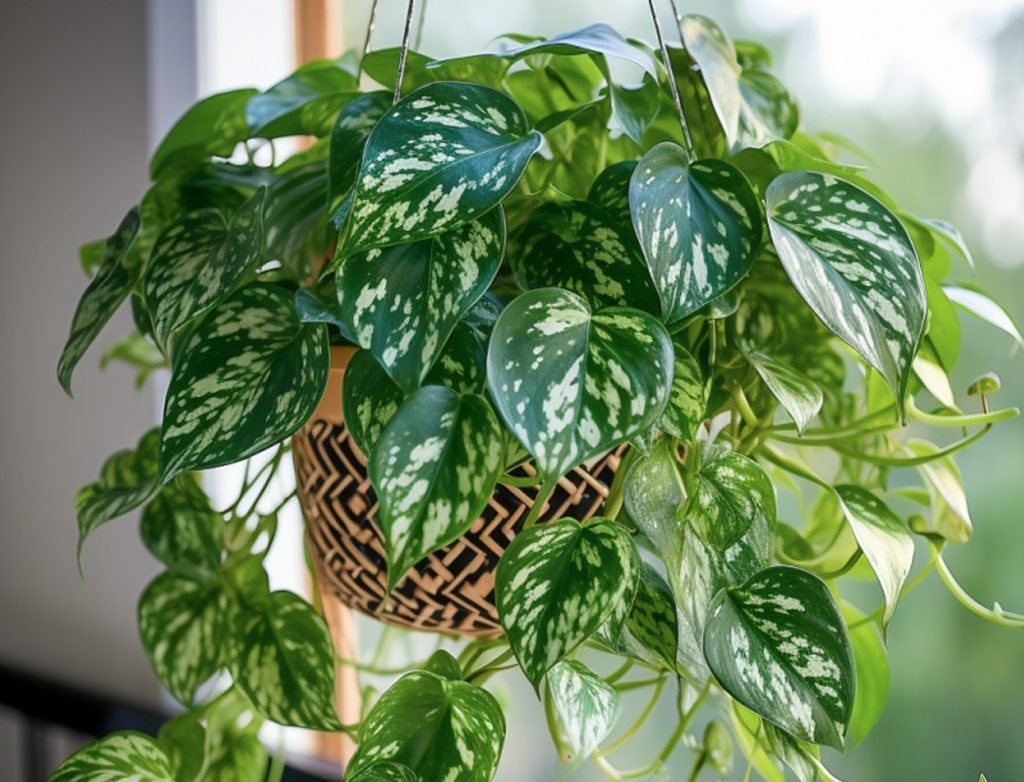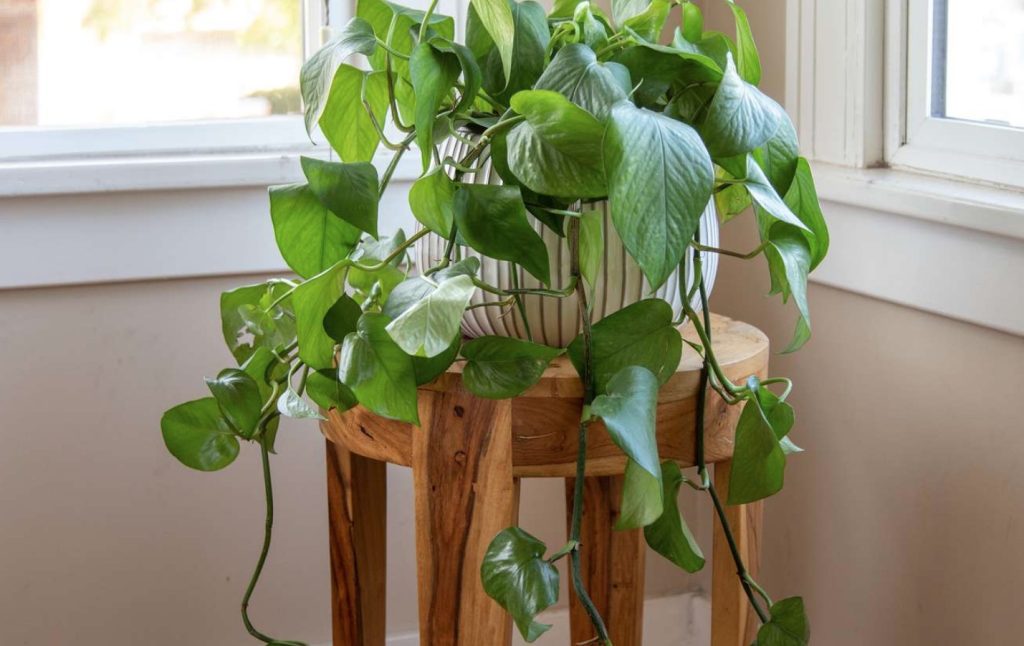
What is a Pothos Plant?
Pothos plants, scientifically known as Epipremnum aureum, are popular houseplants renowned for their versatility and ease of care. These vining plants are native to the Solomon Islands and are characterized by their heart-shaped leaves that come in various shades of green, often with yellow or white variegations. Pothos plants are often grown in hanging baskets, climbing up a moss pole, or trailing over shelves.
How to Care for a Pothos Plant
- Light: Pothos plants thrive in bright, indirect light. While they can tolerate low-light conditions, the growth may be slower, and the variegations may fade. Avoid placing them in direct sunlight, as it can scorch the leaves.
- Watering: Pothos plants prefer their soil to dry out slightly between waterings. Overwatering can lead to root rot, so it’s essential to allow the top inch of soil to dry out before watering. During the winter, reduce the frequency of watering.
- Soil: A well-draining potting mix is ideal for pothos plants. You can use a pre-made potting mix designed for houseplants or create your own by combining peat moss, perlite, and coco coir.
- Fertilizer: Feed your pothos plant with a balanced liquid fertilizer during the growing season (spring and summer). Dilute the fertilizer to half strength and apply it once a month.
- Pruning: Regular pruning helps maintain the shape and size of your pothos plant. You can cut back the vines to encourage bushier growth.
What is Known About Pothos Plants?
Pothos plants are known for their air-purifying properties. Studies have shown that they can remove harmful toxins like formaldehyde and benzene from indoor air. Additionally, pothos plants are considered low-maintenance and can tolerate neglect, making them suitable for busy individuals or those new to gardening.

Benefits of Pothos Plants
- Air purification: Improves indoor air quality
- Low maintenance: Easy to care for
- Versatile: Can be grown in various ways
- Attractive: Adds beauty to your home
- Stress relief: Studies suggest that plants can reduce stress and anxiety
Information About Pothos Plant Varieties
There are numerous pothos plant varieties with unique leaf patterns and colors. Some popular options include:
- Marble Queen: Features dark green leaves with creamy white variegations.
- Neon Pothos: Has bright green leaves with a neon-like glow.
- Jade Pothos: Boasts solid green leaves with a glossy finish.
- Manjula Pothos: Exhibits a combination of green, white, and yellow variegations.
- Njoy Pothos: Features deep green leaves with vibrant yellow splashes.

Conclusion
Pothos plants are a fantastic addition to any home or office. Their versatility, ease of care, and air-purifying properties make them a popular choice among plant enthusiasts. Whether you’re a seasoned gardener or just starting out, a pothos plant is a great option to enhance your indoor space.
FAQs
- Can pothos plants grow outdoors? While pothos plants can tolerate outdoor conditions in warmer climates, they are primarily indoor plants. They prefer consistent temperatures and humidity.
- How often should I repot my pothos plant? Repot your pothos plant every 1-2 years to provide fresh potting mix and more room for root growth.
- Can pothos plants be propagated? Yes, pothos plants can be propagated from cuttings. Simply take a stem cutting with at least two nodes and place it in water or soil until it roots.
- Are pothos plants toxic to pets? Pothos plants are considered toxic to cats and dogs. If you have pets, it’s essential to keep them out of reach.
- What are the common pests that affect pothos plants? Common pests that may affect pothos plants include mealybugs, spider mites, and scale insects. You can treat these pests with insecticidal soap or neem oil.
